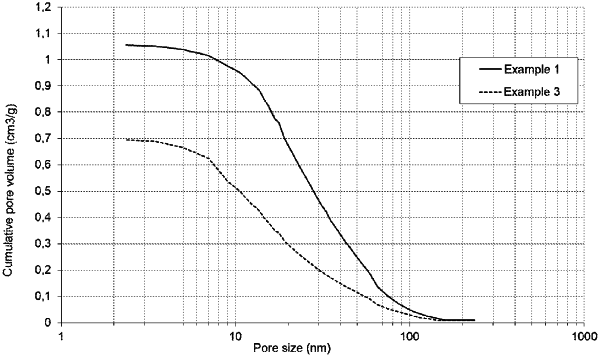| CPC C01F 7/441 (2013.01) [C01F 7/34 (2013.01); C01P 2002/54 (2013.01); C01P 2002/60 (2013.01); C01P 2002/72 (2013.01); C01P 2006/13 (2013.01); C01P 2006/14 (2013.01); C01P 2006/16 (2013.01)] | 20 Claims |

|
1. An aluminum hydrate identified by X-ray diffraction as including boehmite, which may optionally comprise at least one additional element selected from lanthanum, praseodymium or a mixture of the two elements, characterized in that, after having been calcined in air at a temperature of 900° C. for 2 h, it has:
a pore volume in the domain of the pores having a size of less than or equal to 20 nm (denoted by VP20nm-N2) such that VP20nm-N2:
is greater than or equal to 30%×VPT-N2;
is less than or equal to 60%×VPT-N2; and
a pore volume in the domain of the pores having a size of between 40 and 100 nm (denoted by VP40-100nm-N2) such that VP40-100nm-N2 is greater than or equal to 20%×VPT-N2;
VPT-N2 denoting the total pore volume of the aluminum hydrate after calcination in air at 900° C. for 2 hours and being between 0.65 and 1.15 mL/g;
the pore volumes being determined by the nitrogen porosimetry technique.
|